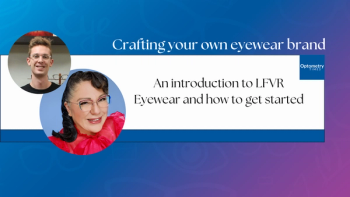
ARVO 2024: Predicting long term efficacy numbers with short term data
Noel Brennan, MScOptom, PhD, overviews his ARVO 2024 presentation on reimagining the prediction of longer term efficacy numbers in data from pediatric trials evaluating myopia.
At this year's ARVO meeting in Seattle, Washington, the Eye Care Network spoke with Noel Brennan, MScOptom, PhD. The clinical research fellow at Johnson and Johnson shared highlights from his presentation on myopia control and predictive modeling, as well as outlined new methods to evaluate longer term efficacy numbers in to myopia control studies.
Video Transcript
Editor’s note - The following transcript has been lightly edited for clarity.
Noel Brennan, PhD, MScOptom:
Hi, I'm Noel Brennan. I'm a clinical research fellow at Johnson and Johnson. I'm here at ARVO 2024 in Seattle. I have a presentation here called 3-year myopia control efficacy can be predicted from 1 year data. Now, the background to this is that the gold standard for myopia control studies has kind of been a 3-year study. But there's a few problems with this, because keeping kids in a control group for 3-years is, perhaps, not ethically acceptable any longer, and in addition, we've noticed that some of the longer term studies, the control groups seem to be becoming perhaps contaminated, as parents are aware that the kids are progressing too fast and maybe withdraw them from the study, or perhaps even, seek treatment outside of the study protocol.
So we wanted to see if we can predict these longer term efficacy numbers from short-term data. And our initial attempt to do this kind of failed, because we couldn't find enough studies that had 3-year control and treated groups. But, what we're able to do initially then was just look at progression. So we looked at 1-year axial elongation, and axial elongation is really the, the benchmark that we use for looking at progression. And we found a lot of studies for that had 3-year data, and the correlation was really quite good. And we could deduce from that, that you are getting double the efficacy at 3 years that you are getting at 1 year. So what the presentation here is done is built on that. We found a few additional studies that were published, and we went back and reviewed some of the earlier work that we had. And in the end, we found 15 studies where we could correlate 1-year efficacy with 3-year efficacy. And rather incredibly, the correlation was, the r-squared value, was 0.97, which is quite remarkable, even though the quality of the studies was not necessarily that great. So this is further support for that concept that 3-year efficacy is going to be double 1-year efficacy. And you might say why isn't a triple? And that's because we get this initial treatment effect in the first year that is that is quite large and strong, and it subsides over the subsequent years. And how do we make sense of this? You know, what news can we report with all this information? Well, first of all, you know that from a regulatory standpoint, perhaps we don't need to do 3-year studies, and we need to review what we perhaps should do.
The second point for clinicians, though is if you have robust 1-year clinical data from a trial, you can use that to predict how well that particular intervention will perform in the longer term. And certainly now, from our perspective, this is what we base our understanding of efficacy on it's the 1-year axial reduction that we see. And if you have a list of these, you'll get the rank order. And we think that's the way really that we should be moving forward for the future. So the next steps for this research really are that we're trying to put together a complete model a comprehensive model of efficacy, so that we can predict what's going to happen beyond 3 years, so to 6 years and 12 years, and we're well on the way there. So for ophthalmologists, you know, the key thing here is what does the 1-year data look like? So you need a robust 1-year trial, and if you look at the data and put them in rank order, that rank order is going to maintain over the longer term, so you can work out which treatments are the most efficacious. But the 1-year data really should be a multi-site, randomized, controlled trial with a large sample size, because we do see some data where the trials are not so strong in their design, and we get can get some strange numbers from that. So we do need quality, 1-year trials.
Newsletter
Want more insights like this? Subscribe to Optometry Times and get clinical pearls and practice tips delivered straight to your inbox.


















































.png)


